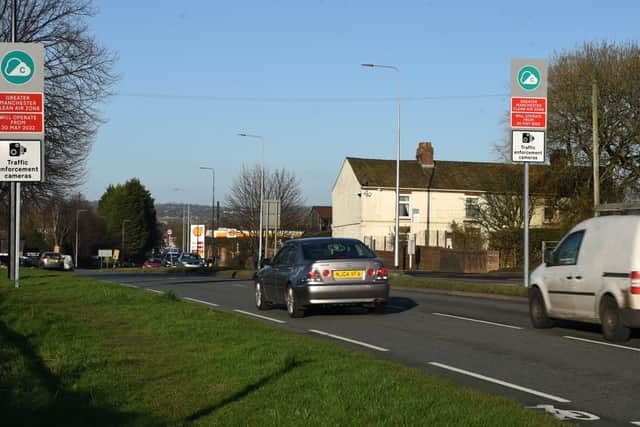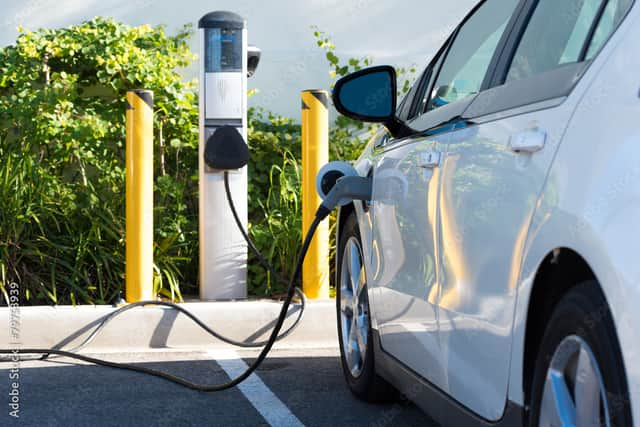Manchester Clean Air Zone: how many electric vehicles are there in Greater Manchester already?
and live on Freeview channel 276
More Greater Manchester drivers are going green, according to figures showing a surge in electric vehicle registrations.
Motorists turning their backs on petrol and diesel contributed to a 40% national rise in the number of newly registered ultra-low emission vehicles last year.
Advertisement
Hide AdAdvertisement
Hide AdThese ULEV figures, however, include hybrid vehicles as well as electric ones. And the new stats also include private cars, which are currently not eligible for charges under the Greater Manchester Clean Air Zone plans.
The RAC said the rise in vehicle numbers proves an “electric revolution” is underway across the UK – but the Green Party says more needs to be done to ensure a switch to electric motoring is sustainable long-term.


How many people have ULEVs in Greater Manchester now?
Department for Transport data shows 53,848 ULEVs were licensed to addresses in Greater Manchester as of September – a 68% increase from 32,046 a year earlier.
Of those, 46,669 (87%) were registered to companies based in the area, while 7,179 were privately owned.
Advertisement
Hide AdAdvertisement
Hide AdOf the ULEVs registered in Greater Manchester as of September, 24,714 were battery powered – defined as zero emission.
A further 28,514 were plug-in hybrid electric models, which combine an electric motor with a petrol or diesel engine.
The figures show 83,000 ULEVs made up 15% of all new registrations nationally between July and September last year, when registrations of petrol and diesel cars fell 41% and 66% respectively.
Around 645,000 ULEVs were registered across the UK as of September – up from 373,000 the year before.


What do ULEVs include?
Advertisement
Hide AdAdvertisement
Hide AdDesigned to emit less than 75g of carbon dioxide from the tailpipe for every kilometre travelled, they include battery electric, plug-in hybrid electric and fuel cell electric vehicles.
The sharp year-on-year rise in ULEVs, which incorporated a record 48,000 registrations made in September alone, came despite an overall drop in new car registrations nationally.
Simon Williams from the RAC said the figures were proof of an “electric revolution” accelerating electric vehicles becoming more mainstream.
He said a wider choice of vehicles, longer travel ranges and fewer fears about having to recharge mid-journey meant more drivers were becoming more willing to take the “zero-emission plunge”.
Advertisement
Hide AdAdvertisement
Hide AdMr Williams added: “If petrol and diesel prices continue to stay at near record levels those who can afford to will be increasingly tempted to go electric.”
The Government has committed to ending the sale of new petrol and diesel cars and vans by 2030, and ensuring all new sales are “zero emissions at the tailpipe” by 2035.
But Caroline Russell, the Green Party’s spokeswoman for transport and healthy streets, said the Government and councils must do more to provide a better network of charging points to ensure switching to electric vehicles is viable and efficient.
She added that it would be a mistake to rely on electric vehicles to resolve the climate and air pollution crisis, saying: “It doesn’t matter how cars are powered, they still contribute to traffic deaths, congestion and dangerous air pollution from tyre wear.”
Advertisement
Hide AdAdvertisement
Hide AdA Government spokesman said the statistics show drivers are increasingly confident in switching to electric vehicles, adding: “We look forward to seeing this trend continue as we work towards the UK’s ambitious net-zero targets.”
He said £2.5 billion had been committed to accelerate the rollout of zero emission vehicles and charging infrastructure across the UK.
In 2021, the total number of public chargepoints increased by a third.
The address a vehicle is registered to does not necessarily reflect where it is located, especially for large fleets kept by companies for leasing or rentals.
- You can find an article explaining the key facts around Greater Manchester’s Clean Air Zone plans here.
Comment Guidelines
National World encourages reader discussion on our stories. User feedback, insights and back-and-forth exchanges add a rich layer of context to reporting. Please review our Community Guidelines before commenting.